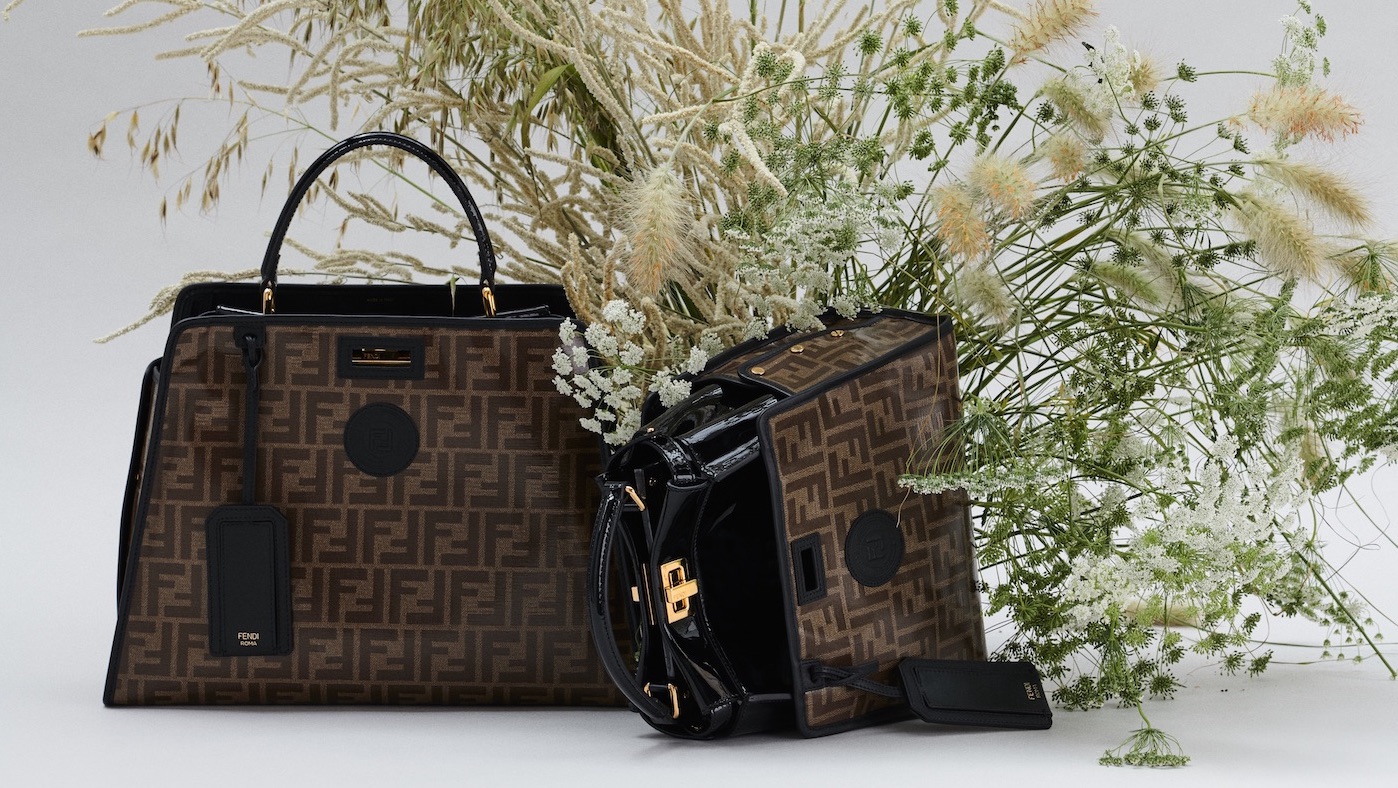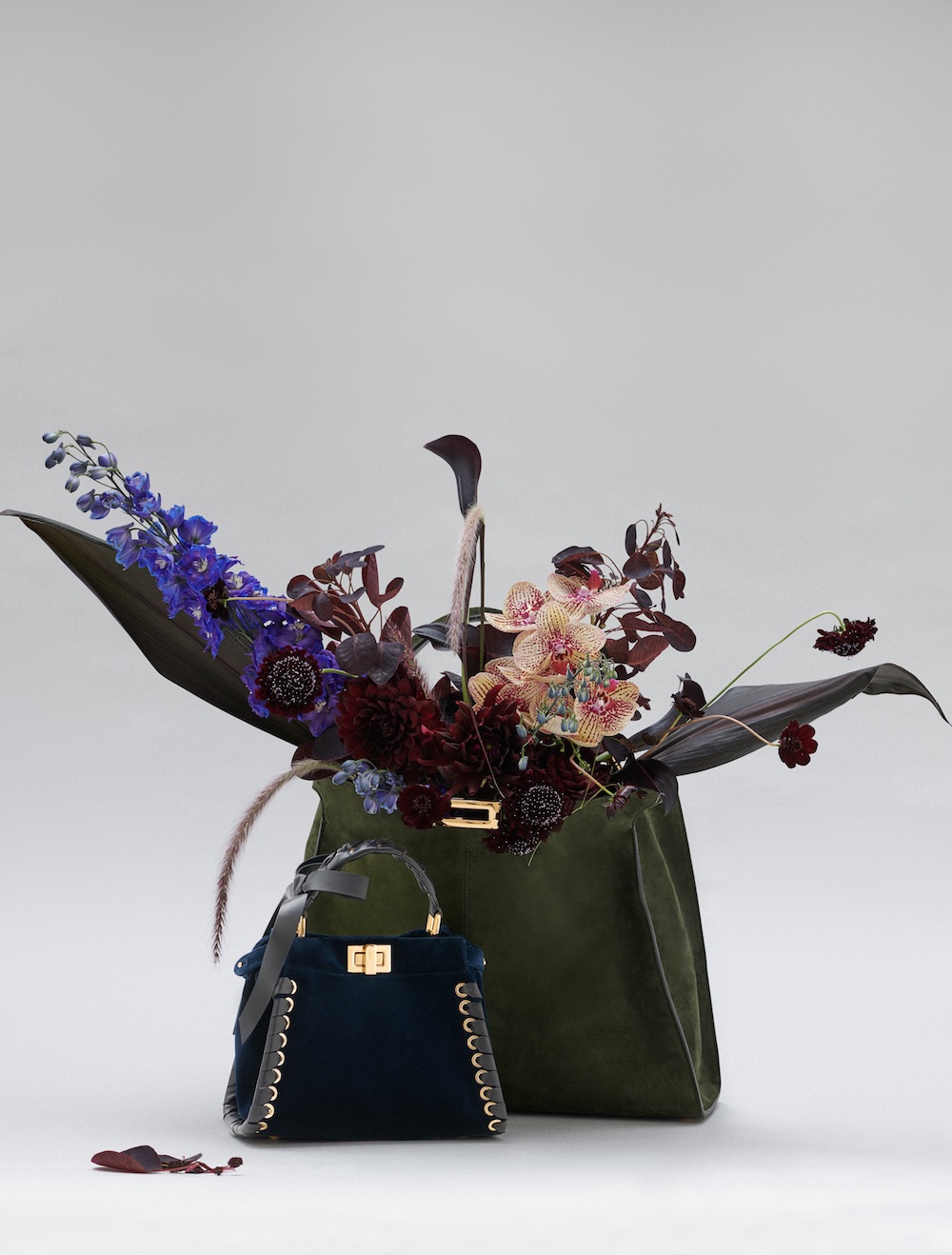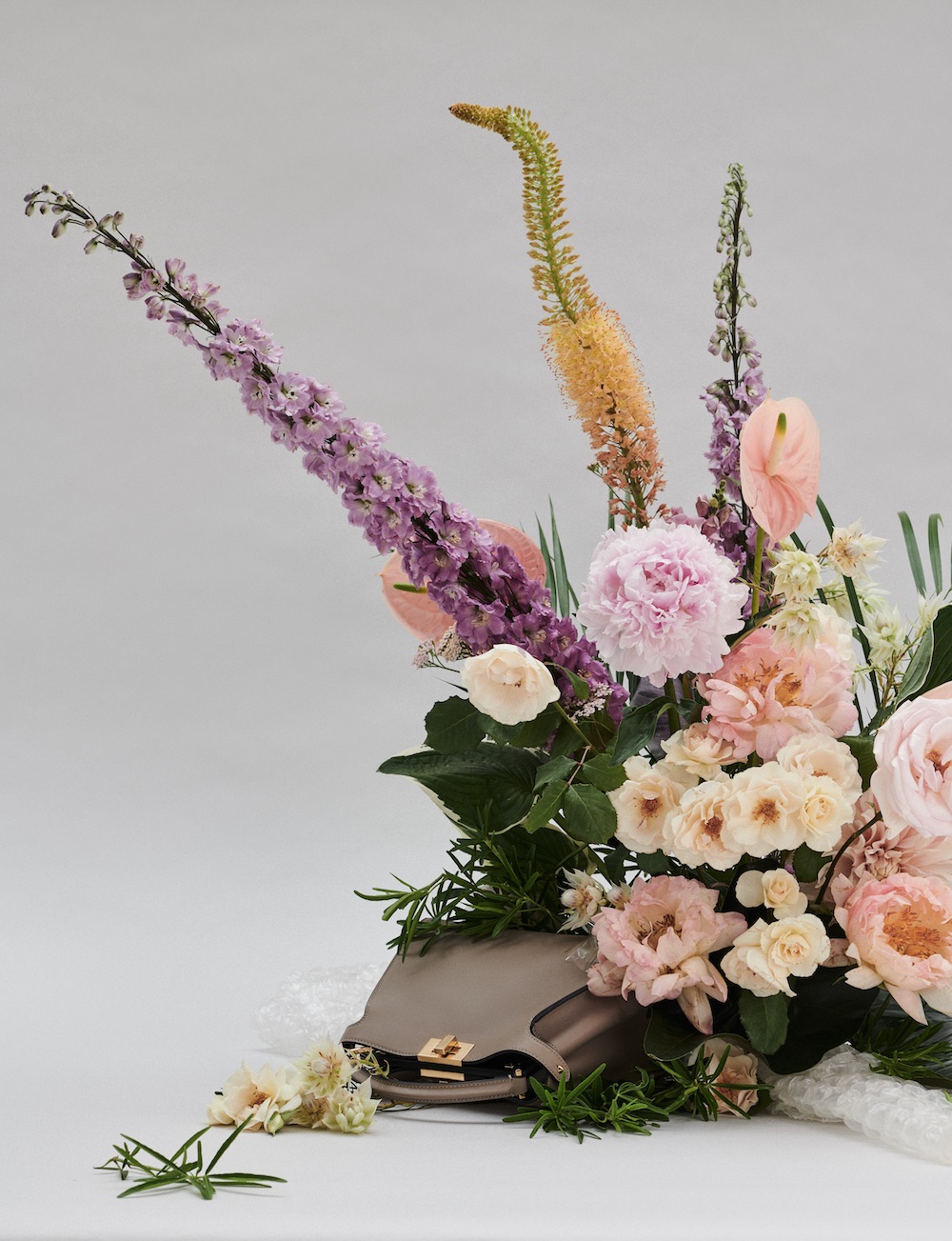The story of Silvia Venturini Fendi’s Peekaboo bag: from tongue-in-cheek accessory to timeless design icon
Almost ten years on from its Milan debut, the Peekaboo continues to reinvent itself

What makes a family heirloom? Passed down through generations, keepsakes take many forms. At Fendi, the playfully named Peekaboo handbag - first released a decade ago - has become a design icon to cherish.
“It is a timeless bag,” says creative director of accessories and menswear Silvia Venturini-Fendi who designed the bag with posterity in mind. “You buy a Peekaboo not only to wear now, but to wear in the future. One of your daughters will probably steal it from your closet!”
The Peekaboo's name comes from its unusual construction: it is a bag of two halves, divided by a rigid middle with a twist lock on both sides. The element of surprise is all down to its front flap which can be pushed down into a U-shape to reveal the strong central partition which acts a canvas to Fendi's artisanal flourishes.
The Week
Escape your echo chamber. Get the facts behind the news, plus analysis from multiple perspectives.

Sign up for The Week's Free Newsletters
From our morning news briefing to a weekly Good News Newsletter, get the best of The Week delivered directly to your inbox.
From our morning news briefing to a weekly Good News Newsletter, get the best of The Week delivered directly to your inbox.
Fendi first introduced the Peekaboo at its Spring 2009 Milan Fashion Week show; models Lara Stone and Anja Rubik swung the future classic in a selection of monochrome finishes, including glossy black patent leather. “I remember seeing it on the runway when they showed it for the first time,” says Venturini-Fendi's eldest daughter, the jewellery designer Delfina Delettrez. “I immediately fell in love with it.”

The bag, whose classic size is 33cm x 26cm, is assembled at Fendi's own ateliers by highly-skilled craftspeople who join cuts of prestige materials, before fitting the leather case around its strong central core, itself fitted with a twist-lock which is matched with gold-finish or silvery-white Palladium hardware.
A decade since its debut, the elegant top-handle bag with signature soft front-pocket has inspired numerous iterations, with finishes ranging from pale blue calfskin to poppy-red Nappa leather; there is also Fendi's emblematic Cuoio Romano (Roman leather), dyed in tones of toffee or asphalt. This autumn, the bags have been given a more tactile outer: curly sheepskins are dyed to match the brand's geometric FF logo; opal-white ostrich leathers blend with complementary Nappa linings.
There is a choice of sizes, too: since 2009, the 33cm long regular (medium) model has been joined by large (40cm), mini (23cm) and 16cm micro creations. “Experimentation and creativity do not have limits in the Fendi creative studio and for our artisans,” says Venturini-Fendi. “We love to research and to extend our boundaries each time.”
A free daily email with the biggest news stories of the day – and the best features from TheWeek.com
Fendi has long been a supporter of the visual arts and Italian cultural heritage. Having funded the restoration of Rome's Trevi Fountain in 2015, the brand unveiled Rome’s first permanent installation of contemporary art, a sculpture of two bronze trees by Italian artist Giuseppe Penone in June 2017. Last year, it announced a three-year partnership with the Galleria Borghese.
The Peekaboo has allowed for more creative projects: Fendi has often invited contemporary artists to use the bag as a canvas. In 2014, a watercolour by Tracey Emin was reimagined in inky blue needlepoint, a year later, to celebrate 50 years of Fendi trading in Japan, the brand called upon five native artists to put their spin on the Peekaboo - Painter Fuyuko Matsui gave her blush pink 'monster mouth bag' little jagged teeth.
Most recently, for her Spring 2018 menswear collection, Venturini-Fendi invited British artist Sue Tilley - best known as Lucian Freud's muse Fat Sue - to create 'Everyday Fendi', a series of paintings used across clothing and accessories. A beige Peekaboo Fit Mini was emblazoned with the leather-inlay of a bright yellow banana skin. “The idea was to use objects that people might have on their desks, so Silvia was eating a banana for her lunch and sent me a photo of the skin", explains Tilley. “I think bags are good for collaborations as they last a long time and anyone can buy one whatever their shape or size.”
Earlier this year, Venturini-Fendi was joined by Delfina and her youngest daughter Leonetta Fendi, as the heritage brand embarked on an ambitious global campaign to commemorate the Peekaboo's tenth anniversary, highlighting the bond between mothers, daughters and siblings with the Peekaboo as a defining link under the #MeAndMyPeekaboo umbrella. A short film features all three women discussing their fondness of the design. “The idea was to celebrate the timeless aspect of the Peekaboo by exploring the concept of family. Bags are timeless because they can be souvenirs from different times of our lives,” says Venturini-Fendi. “It’s incredible how you can feel an emotional connection with them, especially in certain moments.”
For the project's second installment, Fendi turned the lens on a cast of famous women, including K-Pop siblings Jessica and Krystal Jung and actor Ewan McGregor's daughters Esther and Clara. The series kicked off with Kim Kardashian West, her daughter North and mother Kris Jenner, filmed by photographer Marcus Hyde against a dreamy and sun-dappled Californian backdrop. “We have chosen families of women from all over the world and from different generations, showing their more intimate and emotional side, before being in the spotlight, and their very close relationship with the Peekaboo bag,” says Venturini-Fendi of the creative exercise.

#MeAndMyPeekaboo mirrors the family ties and strong female characters which sit at the heart of the Roman maison, established in 1925 by Adele and Edoardo Fendi as a specialist leather and fur shop located on Rome's Via del Plebiscito. In 1946, the couple's five daughters - Paola, Franca, Carla, Alda and Silvia's mother Anna – joined the family business. It was during the Fendi sisters' tenure that the brand's creations arrived on the North American market, before it first partnered with designer Karl Lagerfeld and expanded its offering to include ready-to-wear in 1977. Silvia Venturini Fendi was appointed head of accessories in 1994. “Every bag has a special memory for me,” she says today. “When I was a child, I remember going to the atelier and being fascinated by a beautiful room in grey velvet with cupboards full of precious bags – silk, satin, all embroidered.”
This Fendi Wunderkammer was to inspire one of her early successes, the 1997 launched Baguette bag. Compact and worn tucked neatly under the arm like the French bread, the Baguette was famous for its flourishes and embellishments and epitomised the era of the 'It'-Bag. Venturini-Fendi's follow-up success can be read as a return to minimalism.
“The first Peekaboo was a black one, simple and timeless," she recalls. “The Peekaboo was born from my desire to go back to a subtler luxury, to create bags in the traditional way, made of very precise codes that don’t change each season.” The Peekaboo may have changed sizes and finishes many times since its debut a decade ago, but its classic structure has remained the same. “I am a very practical person, which also makes me a realist, especially when it comes to designing accessories. I focus on functionality and realistic silhouettes,” says Venturini-Fendi. “I am more audacious when it comes to colours and materials.”
As for favourites, Venturini-Fendi is at pains to pick one; her daughter Delfina though has singled one out: “It's the lace-up Peekaboo. It was one of the first bags I ever received. I will pass it down to my daughter.”
Photographer: Ivona Crzastek
Floral arrangments: with thanks to Rebel Rebel
-
 A lemon-shaped exoplanet is squeezing what we know about planet formation
A lemon-shaped exoplanet is squeezing what we know about planet formationUnder the radar It may be made from a former star
-
 Political cartoons for January 4
Political cartoons for January 4Cartoons Sunday's political cartoons include a resolution to learn a new language, and new names in Hades and on battleships
-
 The ultimate films of 2025 by genre
The ultimate films of 2025 by genreThe Week Recommends From comedies to thrillers, documentaries to animations, 2025 featured some unforgettable film moments